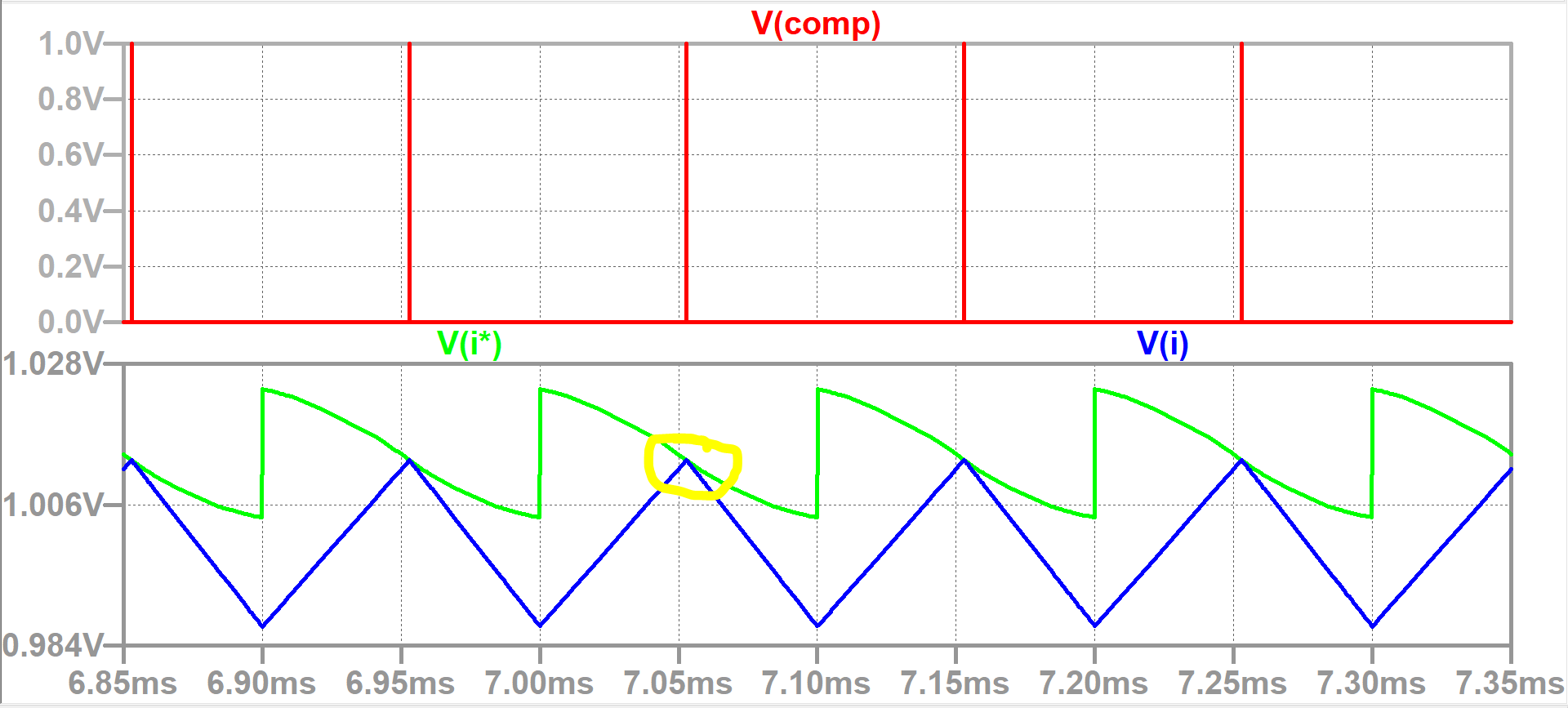I found this image for peak current mode sensing here.
Is there any reason that you sense the peak inductor current from the MP instead of theMN transistor? I know that ideally both should work but I wonder if there is something relating to practice that sensing MP is prefered.
This is an example from the site:
Please tell me what is wrong with my understanding.
Vc is controlled by the load condition. In heavy load condition, Vc increases which in turn increases the duty cycle and inductor current. Conversely for light load condition.
The duty cycle is controlled by the peak inductor current. The peak of the inductor current = peak of rising inductor current = peak of falling inductor current. So as long as you can sense the peak, either peak of rising or falling, both should work.
I agree that there are some problems of low-side sensing because of ringing. Is there another reason that makes low-side sensing not work?
How about if we just sense the inductor current instead of high-side or low-side sensing?
Added question related to simulation:
In this simulation you can see that both rising and falling inductor current share the same peak. So would it work with just the falling section of the current?




